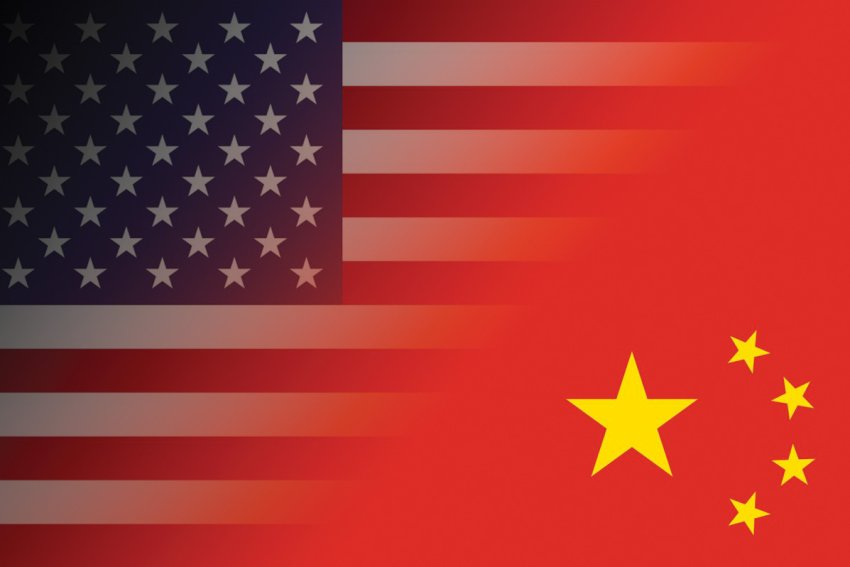
United States President Joe Biden has made clear that in relation to China and Russia he is stepping up confrontation with both nuclear powers.
Recently, his emphasis has been on China. There is consensus in the Democratic and Republican party establishments that China has emerged as the most serious threat to the US empire.
Biden is keeping the trade tariffs former president Donald Trump imposed on Chinese goods.
Secretary of State Anthony Blinken said recently: “China is the only country with the economic, diplomatic, military and technological power to seriously challenge the stable and open international system, all the rules, values and relationships that make the world work the way we want it to, because it ultimately serves the interests and reflects the values of the American people.”
The “international system” he is referring to came into existence following World War II. The US emerged from the war with unquestioned military superiority over the capitalist world, and economic domination of it — expressed in the power of the US dollar as the world’s reserve currency and the Federal Reserve Bank’s international domination.
The US maintains about 600 military bases around the world to protect its interests.
These are the “international system”, “relationships” and “rules” Blinken referred to, “that make the world work the way we want” that China is “seriously” challenging.
By “we” Blinken means the interests of the ruling capitalist class.
Economic threat
Biden met with the leaders of Japan, India and Australia recently — what has become known as the “Quad”, an alliance against China.
Noted Indian historian, journalist and Marxist intellectual Vijay Prashad told Democracy Now! on March 17, that the Biden administration doesn’t regard China as a military threat. “After all, the Chinese military has the capacity to defend its homeland, but [is] not in any way threatening to the US.
“In fact, it’s US naval vessels that are sailing very close to the Chinese mainland in so-called ‘freedom of navigation’ sorties.”
The real threat from China was clarified at the Quad meeting, said Prashad.
“The US government understands that China’s scientific and technological developments, particularly in robotics, in telecommunications, in green technology and so on, have far surpassed that of US and European companies.
“This is an existential threat, as far as the US is concerned … China doesn’t threaten the average American citizen. But Chinese telecommunication companies, like Huawei and ZTE, are a generation ahead of US telecommunications companies.
“Rather than compete on a free market with these companies, the US government is using immense military pressure, diplomatic pressure and a sort of information war to push back China."
The US has tried to bully countries out of adopting Huawei’s 5G telecommunications system, with some success. But that is fraying, given that Huawei’s system is much better and cheaper than what US and European countries offer.
In Brazil, Trump succeeded in getting authoritarian president Jair Bolsonaro to reject Huawei. But, according to the New York Times, now that Trump is not in government, he is open to Brazilian companies making deals with Huawei — for economic reasons.
Belt and Road Initiative
China is also challenging US influence, such as providing countries in the Global South with financing at low interest rates for infrastructure projects through its Belt and Road Initiative, connecting China through Asia to Europe, and now extending to Latin America and parts of Africa.
DN’s Juan Gonzalez said: “Latin America has now become the second major region for Chinese investment abroad. The kinds of projects that the Chinese are helping to finance are really astounding.
“There’s the US$5 billion that’s being spent to build two hydroelectric dams in the Patagonia section of Argentina over the Santa Cruz River; a transcontinental railroad between Peru and Bolivia; and a new canal across Nicaragua that would compete with the monopoly that the Panama Canal has over world shipping.
“Most Americans are not aware of this enormous infrastructure that’s resulting from the Belt and Road policy of China.”
Prashad pointed out that “very little capital has come into these countries from the World Bank or the International Monetary Fund that’s enabled infrastructure projects.
“So what the Chinese have done with the Belt and Road Initiative is provide vast amounts of finance to develop some of this infrastructure, to bridge the gap [with the imperialist countries].
“This is clear in the case in Bolivia, during the administration of Evo Morales, they cut some very important deals with the Chinese to not only mine lithium, which is a key component of batteries, but also to develop the processing of lithium in Bolivia.”
This was one of the reasons that the US supported the reactionary coup against Morales.
The IMF won’t lend to Global South countries unless they agree to austerity reforms, precluding any infrastructure projects.
The mainstream media is right behind the US government’s position that providing such loans to help countries historically oppressed by Western imperialism is an “existential threat”.
Along these lines, an editorial in the March 19 New York Times, entitled “Rising to the Challenge of China”, decried that China’s entry into the world economy didn’t result in China become subservient to US economic dominance.
“This became obvious in 2015, when the Chinese government released a strategic plan called Made in China 2025, which outlined how it would use government subsidies and state-owned enterprises to dominate key technologies.
“Instead of the global economic system changing China, China is changing the global system.”
Vaccines
The NYT warned in another article that by providing vaccines to Latin America — the US is not — China is gaining unfair leverage.
DN’s Amy Goodman noted that Brazil — which is undergoing a huge surge of COVID-19, due to Bolsonaro’s disastrous handling of the pandemic — is now asking China for its vaccine.
“China is the dominant supplier of vaccines in Chile, Mexico, Peru, Colombia, Ecuador and Bolivia,” Goodman said. “And the US is either being accused of hoarding vaccines, or fighting the ability to get these vaccines around the world.”
In response, Prashad said: “There should be no patent on these vaccines. They need to be unlocked. India and South Africa are quite right to ask for them to be unlocked.
“What the Chinese are doing with Sinovac [the vaccine developed in China] is essentially treating it as if it is an unlocked vaccine, delivering it at scale to countries around the world. This should not be seen as a political issue.
“Why should a Swiss company or a US-based company be making billions of dollars, hundreds of billions of dollars, on the pandemic?
“We used to talk about war profiteering. There should be no pandemic profiteering. Pandemic profiteering should be immoral ... There should be no politics in this. There should be no profit in this. This should be treated as a human tragedy which has to be dealt with in a collaborative way by human beings.
“The Chinese, but not only the Chinese, the Cubans [and] other countries are showing the way.
“China doesn’t have a political litmus test [to determine] where it sends Sinovac. It’s not saying to Bolsonaro: ‘Mr Bolsonaro, you and your son have made horrendous, racist comments about the Chinese, therefore we won’t send you the vaccine.’
“No, the Chinese say, “We don’t care what you say. It’s a human tragedy. The Brazilian people should not be held hostage by the ill humour of Mr Bolsonaro'."
There is much to criticise China about. It has become a developing capitalist country, although still poor (its per capita GDP is a quarter that of the US and the other imperialist countries), with all the evils of capitalism. It has an authoritarian government. It is horribly oppressing the Uyghurs, and more.
But we should not criticise China for helping large numbers of Global South countries with funding for building infrastructure or getting COVID-19 vaccines, or for its “made in China” goal of becoming less dependent on US technology.
Whatever China’s rulers’ reasons for doing so, which include building its economy and international influence, these do not represent “existential threats” to the American people, nor justify US military threats.
The US is stepping up its military spending for the Indo-Pacific region. “Just a few weeks ago,” said Prashad, “Admiral Philip Davidson of the Indo-Pacific Command went before the US Armed Services Committee, and asked for $5 billion for the Indo-Pacific Command this year and $27 billion over the next period.
“Davidson said something very chilling at this hearing. He said the US government must ‘be prepared to fight’.
“The Chinese have not used any belligerent language. In fact, they have cautioned and said, ‘We need to dial back this tension. The so-called ‘freedom of navigation’ sorties by the US Navy need to stop. The US needs to draw back. There is no need to militarise Guam.’”
“A conflict is unimaginable between two nuclear powers,” said Prashad.
Indeed. And yet, the US is ramping up its aggressive language and spending more to beef up its military bases in Japan and in the region, bringing the world closer to war.
